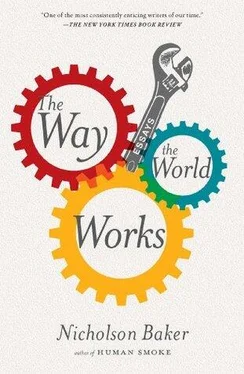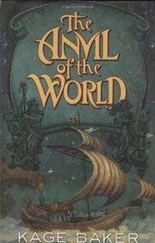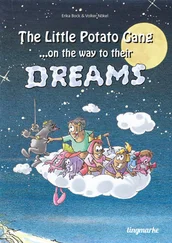Sometimes whole articles and op-ed contributions aren’t there. Three pieces from the July 8, 2009, print edition of the Times —Adam Nagourney on Sarah Palin’s resignation, Alessandra Stanley on Michael Jackson’s funeral, and David Johnston on the civil rights of detainees — were missing from the Kindle edition, or at least I haven’t managed to find them (they’re available free on the Times website); the July 9 Kindle issue lacked the print edition’s reporting on interracial college roommates and the infectivity rates of abortion pills. I checked again on July 20 and 21: Verlyn Klinkenborg’s appreciation of Walter Cronkite was absent, as was a long piece on Mongolian shamanism.
The Kindle DX ($489) doesn’t save newspapers; it diminishes and undercuts them — it kills their joy. It turns them into earnest but dispensable blogs.
Amazon, with its Listmania Lists and its sometimes inspired recommendations and its innumerable fascinating reviews, is very good at selling things. It isn’t so good, to date anyway, at making things. But, fortunately, if you want to read electronic books there’s another way to go. Here’s what you do. Buy an iPod Touch (it costs seventy dollars less than the Kindle 2, even after the Kindle’s price was recently cut), or buy an iPhone, and load the free “Kindle for iPod” application onto it. Then, when you wake up at 3 a.m. and you need big, sad, well-placed words to tumble slowly into the basin of your mind, and you don’t want to disturb the person who’s in bed with you, you can reach under the pillow and find Apple’s smooth machine and click it on. It’s completely silent. Hold it a few inches from your face, with the words enlarged and the screen’s brightness slider bar slid to its lowest setting, and read for ten or fifteen minutes. Each time you need to turn the page, just move your thumb over it, as if you were getting ready to deal a card; when you do, the page will slide out of the way, and a new one will appear. After a while, your thoughts will drift off to the unused siding where the old tall weeds are, and the string of curving words will toot a mournful toot and pull ahead. You will roll to a stop. A moment later, you’ll wake and discover that you’re still holding the machine but it has turned itself off. Slide it back under the pillow. Sleep.
I’ve done this with Joseph Mitchell’s The Bottom of the Harbor ($13.80 Kindle, $17.25 paperback) and with Wilkie Collins’s The Moonstone . The iPod screen’s resolution, at 163 pixels per inch, is fairly high. (It could be much higher, though. High pixel density, not a reflective surface, is, I’ve come to believe, what people need when they read electronic prose.) There are other ways to read books on the iPod, too. My favorite is the Eucalyptus application, by a Scottish software developer named James Montgomerie: for $9.99, you get more than twenty thousand public-domain books whose pages turn with a voluptuous grace. There’s also the Iceberg Reader, by ScrollMotion, with fixed page numbers, and a very popular app called Stanza. In Stanza, you can choose the colors of the words and of the page, and you can adjust the brightness with a vertical thumb swipe as you read. Stanza takes you to Harlequin Imprints, the Fictionwise Book Store, O’Reilly Ebooks, Feedbooks, and a number of other catalogs. A million people have downloaded Stanza. (In fact, Stanza is so good that Amazon has just bought Lexcycle, which makes the software; meanwhile, Fictionwise has been bought by a worried Barnes & Noble.)
Forty million iPod Touches and iPhones are in circulation, and most people aren’t reading books on them. But some are. The nice thing about this machine is (a) it’s beautiful, and (b) it’s not imitating anything. It’s not trying to be ink on paper. It serves a night-reading need, which the lightless Kindle doesn’t. And the wasp passage in Do Insects Think? is funny again on the iPod.
The paperback edition of The Lincoln Lawyer ($7.99 at Sherman’s in Freeport) has a bright-green cover with a blurry photograph of a car on the front. It says “Michael Connelly” in huge metallic purple letters, and it has a purple band on the spine: “#1 New York Times Bestseller.” On the back, it says, “A plot that moves like a shot of Red Bull.” It’s shiny and new and the type is right, and it has the potent pheromonal funk of pulp and glue. When you read the book, its gutter gapes before your eyes, and you feel you’re in it. In print, The Lincoln Lawyer swept me up. At night, I switched over to the e-book version on the iPod ($7.99 from the Kindle Store), so that I could carry on in the dark. I began swiping the tiny iPod pages faster and faster.
Then, out of a sense of duty, I forced myself to read the book on the physical Kindle 2. It was like going from a Mini Cooper to a white 1982 Impala with blown shocks. But never mind: at that point, I was locked into the plot and it didn’t matter. Poof, the Kindle disappeared, just as Jeff Bezos had promised it would. I began walking up and down the driveway, reading in the sun. Three distant lawn mowers were going. Someone wearing a salmon-colored shirt was spraying a hose across the street. But I was in the courtroom, listening to the murderer testify. I felt the primitive clawing pressure of wanting to know how things turned out.
I began pressing the Next Page clicker more and more eagerly, so eagerly that my habit of page-turning, learned from years of reading — which is to reach for the page corner a little early, to prepare for the movement — kicked in unconsciously. I clicked Next Page as I reached the beginning of the last line, and the page flashed to black and changed before I’d read it all. I was trying to hurry the Kindle. You mustn’t hurry the Kindle. But, hell, I didn’t care. The progress bar at the bottom said I was 91 percent done. I was at location 7547. I was flying along. Gray is a good color, I thought. Finally, I was on the last bit. It was called “A Postcard from Cuba.” I breathed an immense ragged sigh. I read the acknowledgments and the about-the-author paragraph — Michael Connelly lives in Florida. Good man. The little progress indicator said 99 percent. I clicked the Next Page button. It showed the cover of the book again. I clicked Next Page again, but there was no next page. My first Kindle-delivered novel was at its end.
(2009)
There are two paper mills in the town of Jay, in Maine, on the Androscoggin River. One mill, now owned by Verso Paper Corp., makes the paper for Martha Stewart Living, National Geographic, Cosmopolitan, and other magazines. It’s a big plant, built by International Paper in the sixties. The other mill is older and made of brick and stone. It’s called the Otis Mill, and it was built by Hugh Chisholm, the founder of International Paper, in 1896. Back then it was a prodigy — THE LARGEST PAPER MILL PLANT IN THE WORLD, according to a headline in the Lewiston Weekly Journal, which was exaggerating, but only a little.
The Otis Mill has produced all sorts of paper over the years — paper for postcards, ornate playing cards, wallpaper, copier paper, inkjet paper, and the shiny, peel-off paper backing for sticky labels. Now, though, the Otis Mill doesn’t make anything. The paper industry is in a slump. The new owner, Wausau Paper, shut down one of Otis’s two paper machines in August 2008. The number of employees dropped from about 250 to 96. Then, this spring, Wausau’s CEO, Thomas J. Howatt, closed the plant altogether. The closure was a difficult decision, he said in a press release, but it was necessary in order to “preserve liquidity and match capacity with demand during a period of severe economic difficulty.” The final reel of paper came off the mill at 6:50 a.m. on June 1, 2009. It was parchment paper, the kind bakers use to bake cookies.
Читать дальше












